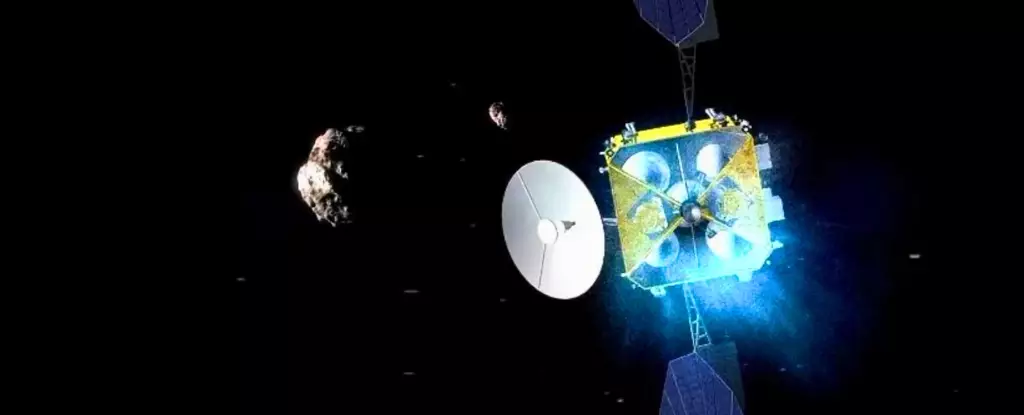In a significant leap forward for its ambitious space exploration program, China has successfully launched the Tianwen-2 probe, marking the nation’s inaugural mission aimed at retrieving samples from an asteroid. This endeavor demonstrates not only China’s technological advancements but also its growing ambition in the realm of space exploration, reinforced by a substantial investment of billions of dollars under the guidance of President Xi Jinping. His vision, often referred to as the “space dream,” encapsulates a desire to establish China as a leader in extraterrestrial research and exploitation.
Launch and Mission Details
The historic launch occurred at 1:31 am local time from the Xichang satellite launch center in Sichuan province aboard a Long March-3B rocket. The mission is set to retrieve samples from the near-Earth asteroid 2016HO3, an object rich in ancient materials believed to provide critical insights into the formation of the early Solar System. This asteroid, with a diameter ranging from 40 to 100 meters, was discovered by Hawaiian astronomers in 2016 and is positioned relatively close to Earth, making it an attractive target for study.
What’s particularly remarkable about the Tianwen-2 mission is its dual objectives: not only will it collect samples from 2016HO3, but it will also engage in exploratory activities concerning the comet 311P, which exhibits unique characteristics that blur the lines between asteroids and comets. This dual focus exemplifies the interdisciplinary approach China is taking towards space research, broadening our understanding of cosmic phenomena.
The Broader Implications of China’s Space Ambitions
China’s ascent as a formidable player in space is not just marked by technological prowess; it also serves strategic interests. By establishing a permanent base on the Moon and building its own space station, Tiangong—which translates to “celestial palace”—Beijing aims to assert itself on the global stage. The Tiangong space station is positioned to become a focal point for international cooperation, potentially altering the dynamics of how countries engage in space exploration.
The Tianwen-2 mission is expected to span approximately a decade, showcasing China’s commitment to long-term space projects and its determination to contribute to humanity’s collective knowledge of the universe. As the nation continues to push boundaries, there is anticipation surrounding the potential groundbreaking discoveries that may emerge, particularly in understanding planetary formation and the origins of water and organic compounds.
China’s Legacy in Space Exploration
China stands as the third nation to successfully send humans into orbit, following the legacy of the United States and the Soviet Union. By executing intricate missions that include landing robotic rovers on both Mars and the Moon, it has proven its capabilities in an arena often dominated by Western powers. The recent Shenzhou-20 mission, which saw three astronauts embark on a six-month stay aboard Tiangong, reinforced China’s growing expertise in sustaining human life in space.
This transformation in the global landscape of space exploration, with China emerging as a forerunner, raises questions about competition and collaboration in humanity’s quest to understand the cosmos. As nations invest in their respective space programs and shift focus from Earth-centric issues, the collective journey into the universe becomes not just a scientific endeavor but a quest for national prestige and technological leadership.

